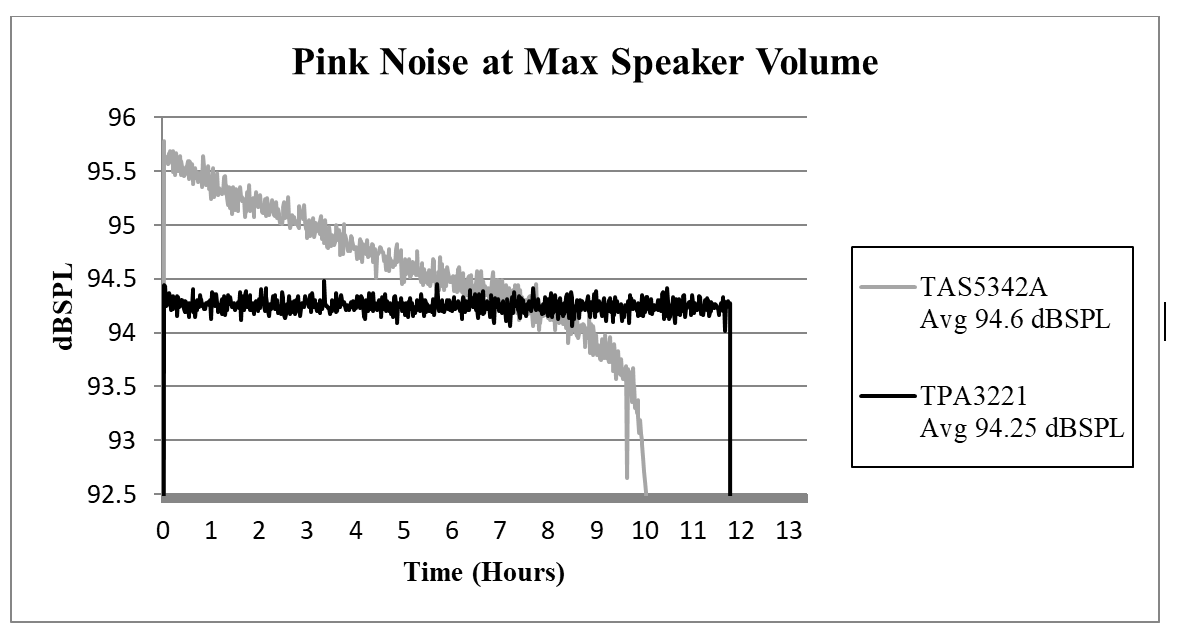SLOA290A April 2020 – August 2020 TAS5805M
8 Feedback
Class-D amplifiers vary in their feedback topology. Some devices have an internal integrated closed-loop feedback circuit, some have open-loop, and some are configured to support an external closed-loop feedback circuit. Feedback affects the audio performance and noise of a device. Generally, closed-loop systems outperform open-loop systems. Aside from this, a closed-loop device can provide a more consistent output power even with a varying supply voltage. An open-loop device would decrease its output in case of a battery-powered supply, or vary with unstable power supply. The best example of this is an old-school flashlight, where the light dims overtime as the batteries get weaker. As shown in Figure 8-1 are the results of an experiment where a battery-powered Bluetooth® speaker using TAS5342A was re-wired to use the TPA3221 instead. The test was conducted multiple times using each device with the same results. Beginning with a fully charged battery, pink noise was played and the sound pressure level (SPL) was measured until the speaker stopped playing due to the battery draining. While both devices had a similar average SPL, the closed-loop TPA3221 maintained a constant SPL through shutdown while the open-loop TAS5342A demonstrated a decay correlating with the draining battery voltage.
 Figure 8-1 Open-loop vs. Closed-loop Amplifiers Powered by Battery
Figure 8-1 Open-loop vs. Closed-loop Amplifiers Powered by BatterySome devices support further enhancement through the use of a feedback loop created external to the amplifier, in addition to their internal feedback loops. This is referred to as a post-filter feedback loop. For more information on this, visit the TPA324x and TPA325x Post-Filter Feedback application note.